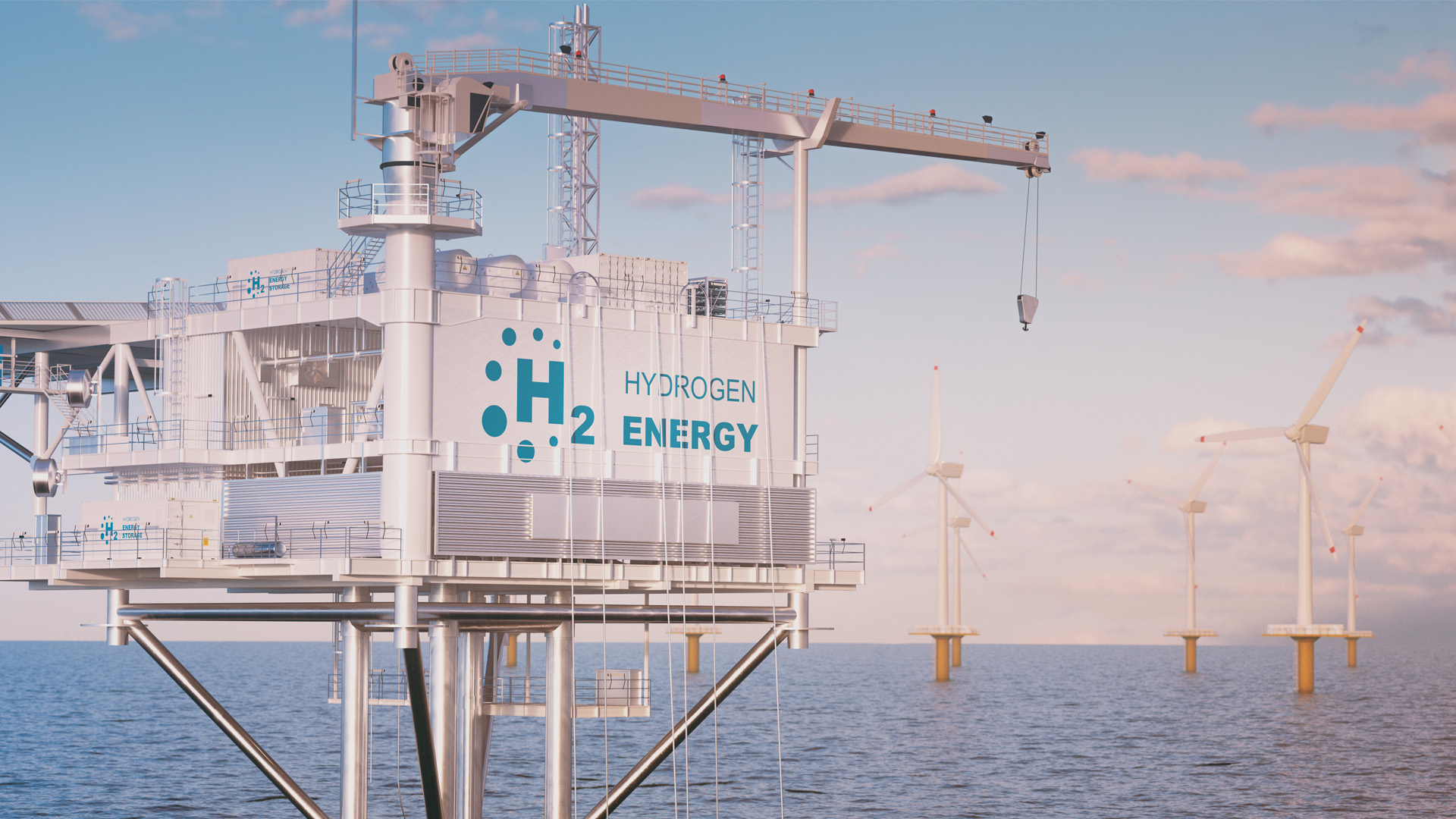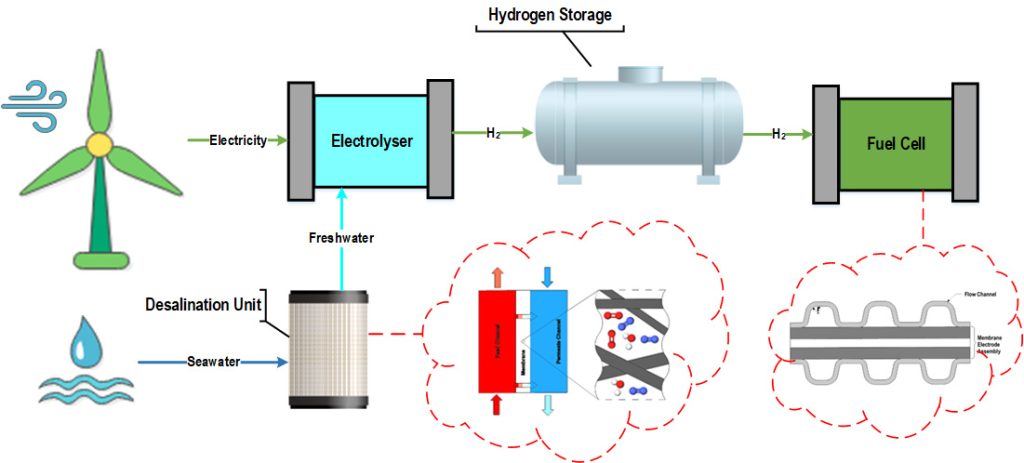Researcher in Residence: Navigating the winds of change

As the nation embarks on its journey towards a cleaner energy landscape, the government has thrown its weight behind wind-to-hydrogen projects, signalling a commitment to harnessing the power of nature to drive sustainability. This project, led by the University of Hull’s Mohammed Ismail and the Advanced Manufacturing Research Centre (AMRC), seeks to explore the technical and economic viability of a power-to-power system that seamlessly integrates offshore wind turbines, on-site green hydrogen generation via electrolysers, hydrogen storage, and fuel cells.
In astride towards decarbonisation, the UK government has charted an ambitious course by setting a target of achieving 10 GW of low-carbon hydrogen production capacity by 2030, with a significant portion derived from green hydrogen. Recognised for its potential to mitigate emissions in challenging sectors like aviation, low-carbon hydrogen production relies on the electrolysis of water, powered by renewable energy sources such as offshore wind.
At the heart of this project lie two innovative elements poised to revolutionise the green hydrogen landscape. Firstly, inspired by Mohammed Ismail’s prior work, which was shortlisted for a Newton Prize in 2020, a novel desalination method will be employed to procure freshwater for the electrolysis process. Drawing from successes in providing freshwater to rural areas in Egypt, this approach promises to streamline the production process while minimising environmental impact.

Secondly, leveraging insights gleaned from numerical studies conducted by the applicant, the project aims to enhance fuel cell performance through the implementation of cutting-edge flow channel designs. Preliminary findings suggest that these innovative channels have the potential to bolster fuel cell efficiency by a remarkable 20%, underscoring their significance in advancing hydrogen technology.
Mohammed said: “Green hydrogen will play a crucial role in meeting the UK’s Net Zero emission targets by decarbonising hard-to-abate sectors such as aviation. This project aims to increase the cost-competitiveness of wind power-driven green hydrogen production and utilisation systems by developing a novel and cost-effective method to produce freshwater for offshore electrolysers, and integrating fuel cell flow channels that have been demonstrated to significantly improve fuel cell performance. The project is in partnership with the AMRC and Energy Systems Catapult, both of which are equipped with the ultra-precision machines and sophisticated modelling packages required to successfully meet the deliverables of the project. The successful outcomes of the project will reinforce the UK’s position as a leader in offshore green hydrogen production.”
By harnessing these advancements, the project aspires to make meaningful strides towards the UK’s hydrogen production targets, fostering efficiency, and championing green hydrogen as a sustainable energy solution. In doing so, it not only contributes to the nation’s climate objectives but also sets a precedent for global innovation in the pursuit of a greener, more sustainable future.



